Henry Addington Worksheets
Do you want to save dozens of hours in time? Get your evenings and weekends back? Be able to teach about Henry Addington to your students?
Our worksheet bundle includes a fact file and printable worksheets and student activities. Perfect for both the classroom and homeschooling!
Resource Examples
Click any of the example images below to view a larger version.
Fact File
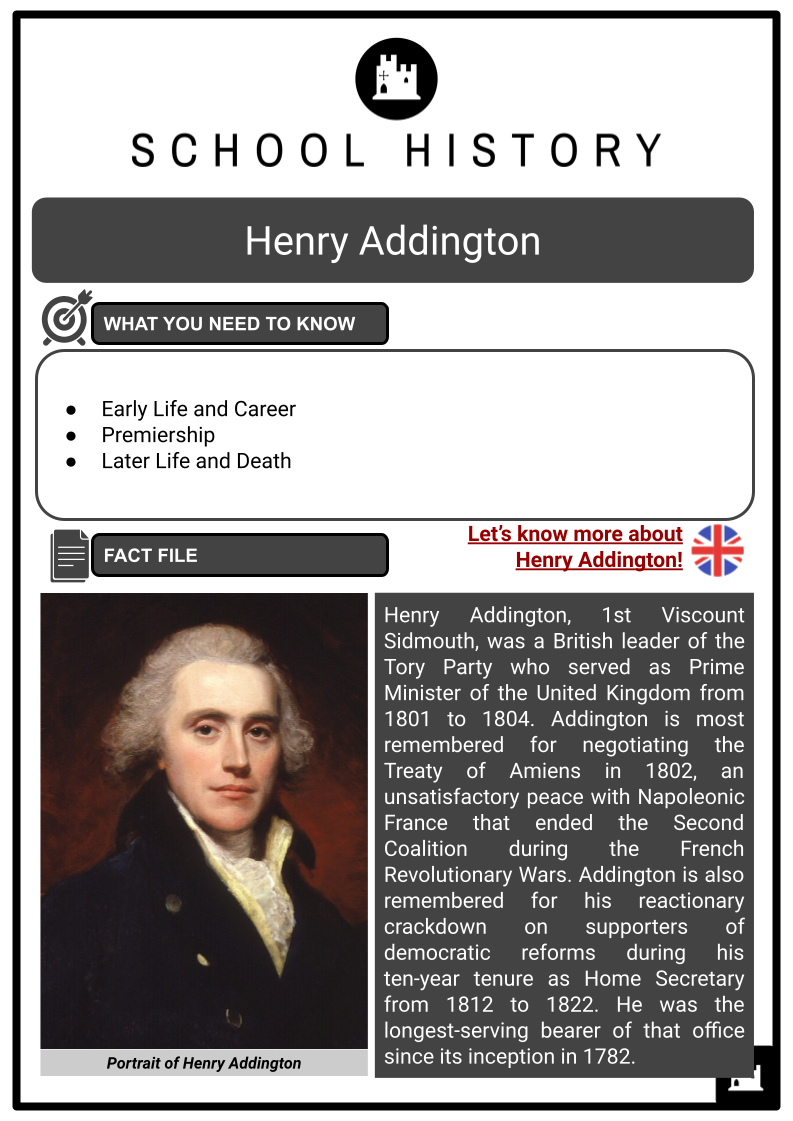
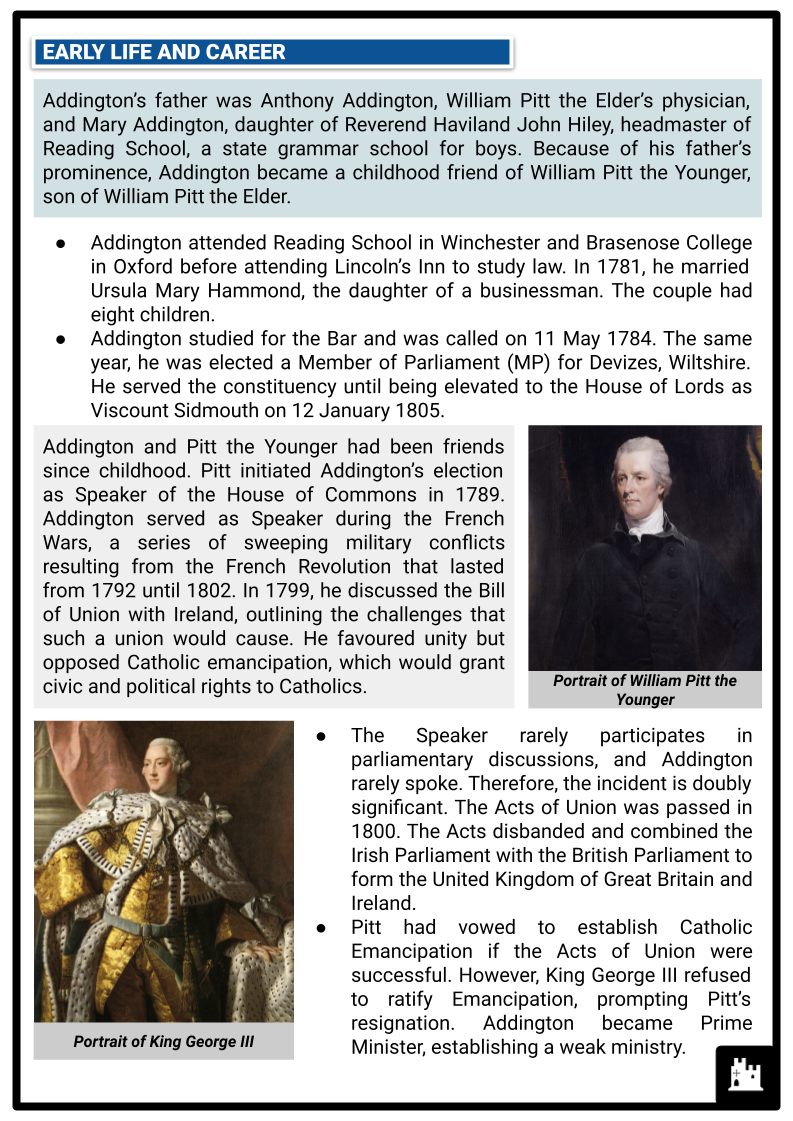
Student Activities
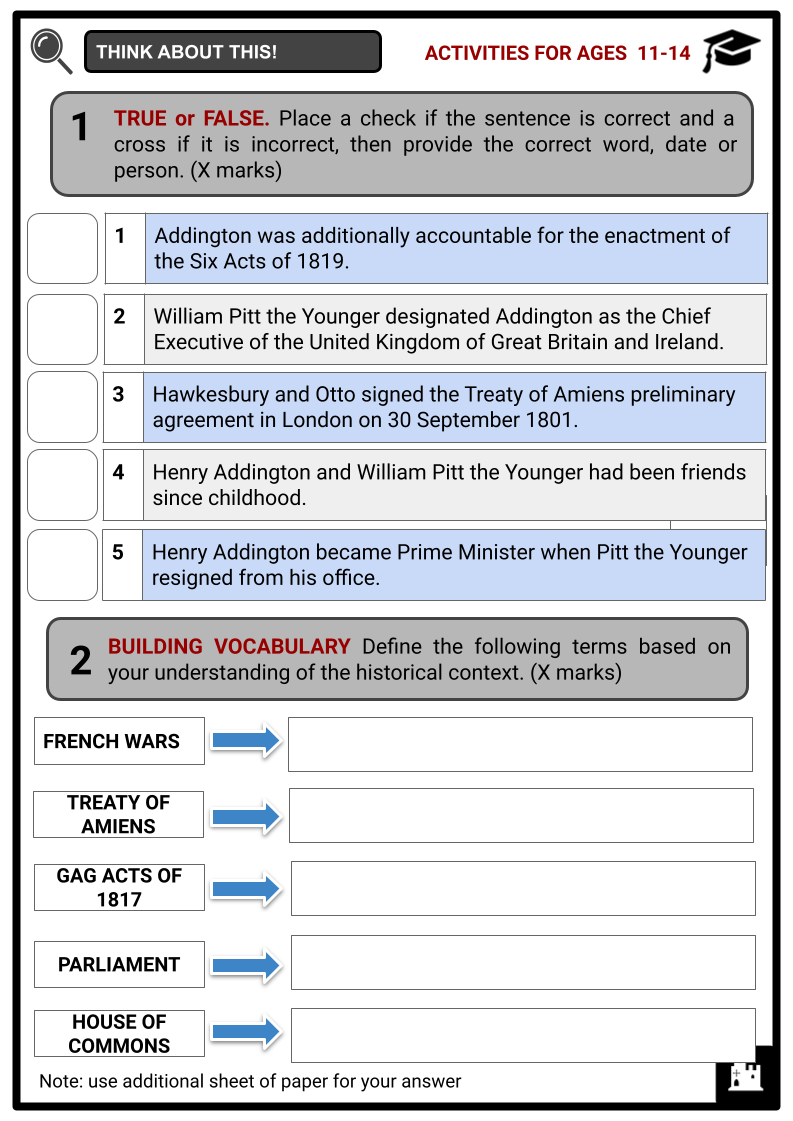
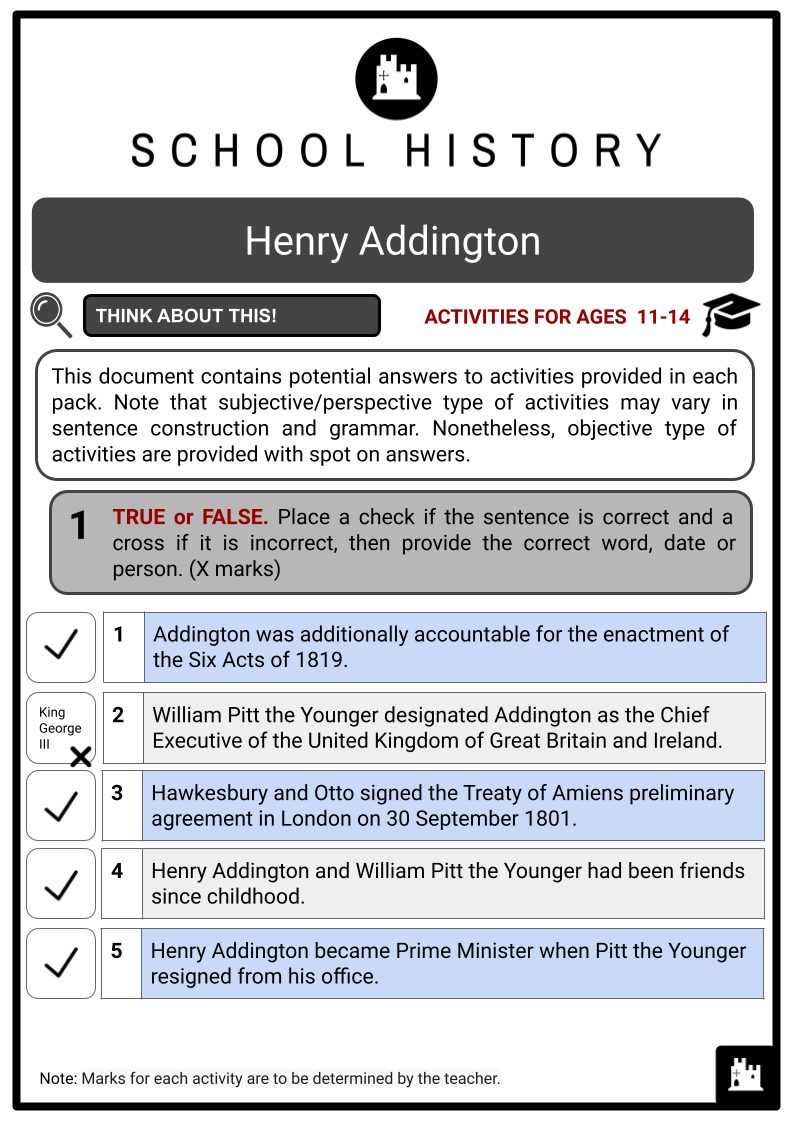
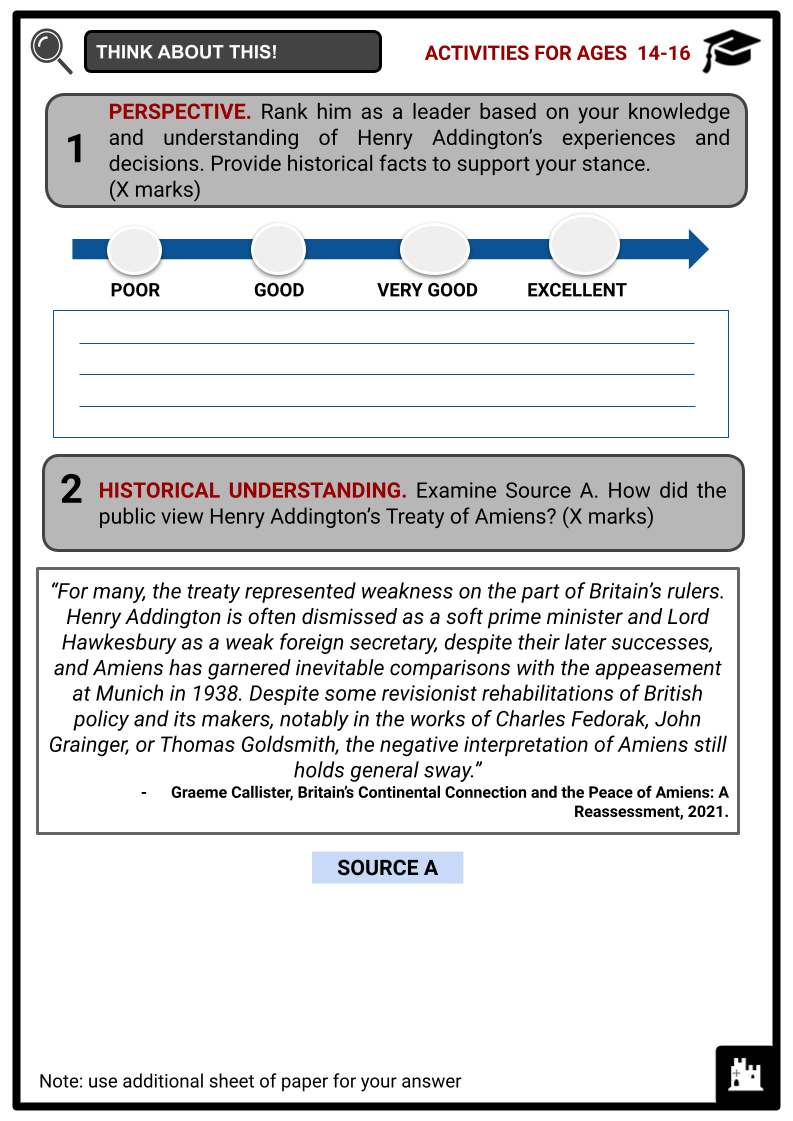
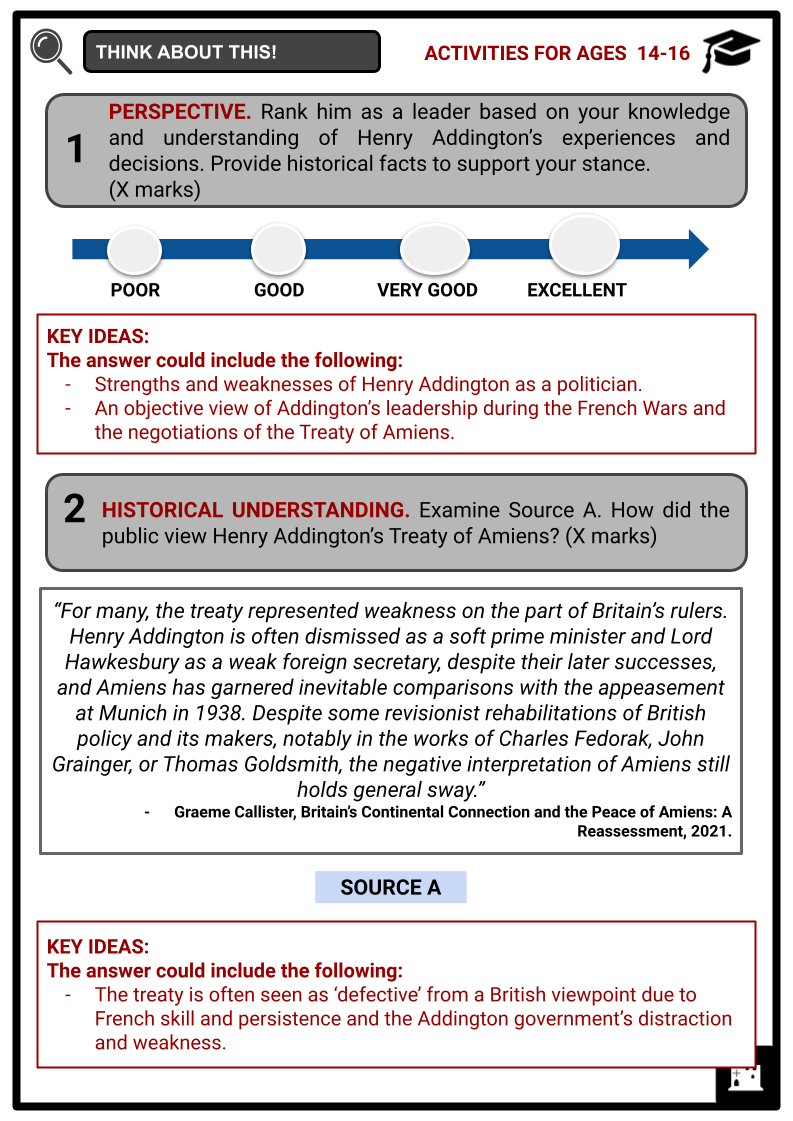
Summary
- Early Life and Career
- Premiership
- Later Life and Death
Key Facts And Information
Let’s know more about Henry Addington!
Henry Addington, 1st Viscount Sidmouth, was a British leader of the Tory Party who served as Prime Minister of the United Kingdom from 1801 to 1804. Addington is most remembered for negotiating the Treaty of Amiens in 1802, an unsatisfactory peace with Napoleonic France that ended the Second Coalition during the French Revolutionary Wars. Addington is also remembered for his reactionary crackdown on supporters of democratic reforms during his ten-year tenure as Home Secretary from 1812 to 1822. He was the longest-serving bearer of that office since its inception in 1782.
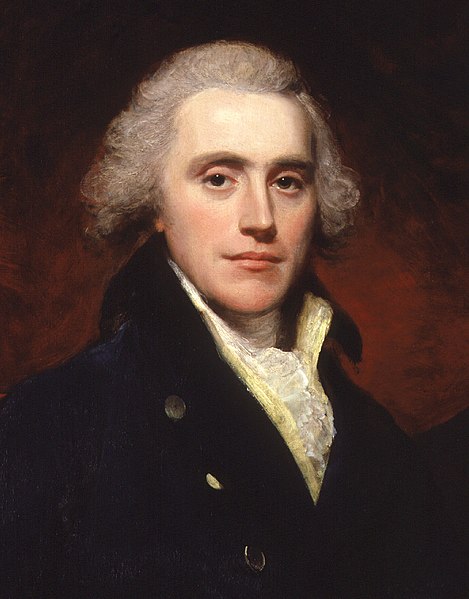
EARLY LIFE AND CAREER
- Addington’s father was Anthony Addington, William Pitt the Elder’s physician, and Mary Addington, daughter of Reverend Haviland John Hiley, headmaster of Reading School, a state grammar school for boys. Because of his father’s prominence, Addington became a childhood friend of William Pitt the Younger, son of William Pitt the Elder.
- Addington attended Reading School in Winchester and Brasenose College in Oxford before attending Lincoln’s Inn to study law. In 1781, he married Ursula Mary Hammond, the daughter of a businessman. The couple had eight children.
- Addington studied for the Bar and was called on 11 May 1784. The same year, he was elected a Member of Parliament (MP) for Devizes, Wiltshire. He served the constituency until being elevated to the House of Lords as Viscount Sidmouth on 12 January 1805.
- Addington and Pitt the Younger had been friends since childhood. Pitt initiated Addington’s election as Speaker of the House of Commons in 1789. Addington served as Speaker during the French Wars, a series of sweeping military conflicts resulting from the French Revolution that lasted from 1792 until 1802. In 1799, he discussed the Bill of Union with Ireland, outlining the challenges that such a union would cause. He favoured unity but opposed Catholic emancipation, which would grant civic and political rights to Catholics.
- The Speaker rarely participates in parliamentary discussions, and Addington rarely spoke. Therefore, the incident is doubly significant. The Acts of Union was passed in 1800. The Acts disbanded and combined the Irish Parliament with the British Parliament to form the United Kingdom of Great Britain and Ireland.
- Pitt had vowed to establish Catholic Emancipation if the Acts of Union were successful. However, King George III refused to ratify Emancipation, prompting Pitt’s resignation. Addington became Prime Minister, establishing a weak ministry.
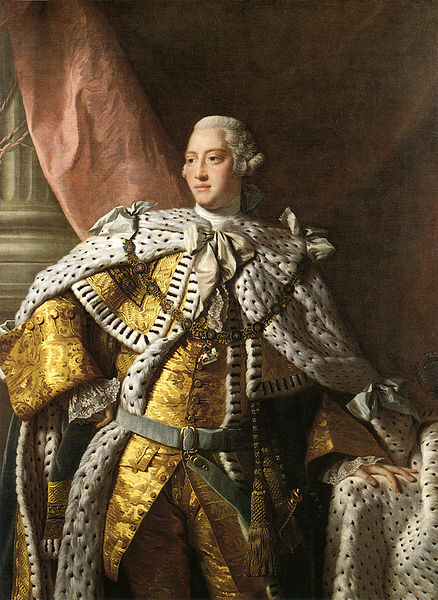
PREMIERSHIP
- King George III appointed Addington as the leader of the administration of the United Kingdom of Great Britain and Ireland from 1801 to 1804. Addington served as an intermediary between the Pitt regimes. The focus of his tenure in government centred on international policy. The effectiveness of the income tax was quadrupled as a result of domestic improvements established by Addington. He successfully negotiated the Treaty of Amiens in 1802 in the field of international affairs.
Treaty of Amiens
- The War of the Second Coalition began well for the coalition, with victories in Egypt, Italy and Germany. However, the success was short-lived: following France’s wins at the battles of Marengo and Hohenlinden, Austria, Russia and Naples sought peace. Austria eventually signed the Treaty of Lunéville, which reestablished the Ligurian and Cisalpine republics.
- British flag officer Horatio Nelson’s victory at the Battle of Copenhagen on 2 April 1801 ended the League of Armed Neutrality formation and resulted in a negotiated ceasefire.
- Napoleon Bonaparte, the French First Consul, originally proposed a truce to British Foreign Secretary William Wyndham Grenville, 1st Baron Grenville, in 1799.
- Grenville and Prime Minister Pitt the Younger’s harsh position, suspicion of Bonaparte, and glaring proposal flaws led to their outright rejection.
- During the early months of Addington’s premiership, Britain was spurred by the prospect of war with Russia.
- Addington’s foreign secretary, Robert Jenkinson, Lord Hawkesbury, immediately contacted Louis Guillaume Otto, the French commissary for prisoners of war in London to whom Bonaparte had previously made his suggestions.
- Hawkesbury claimed that he intended to begin conversations about the details of a peace accord. In mid-1801, Otto negotiated with Hawkesbury, largely following Bonaparte’s specific instructions.
- By mid-September 1801, the written negotiations had advanced to the point where Hawkesbury and Otto met to form a preliminary agreement. They signed the preliminary agreement in London on 30 September 1801, and it was published the following day.
- In November 1801, Charles Cornwallis, a British Army officer and 1st Marquess Cornwallis, was sent to France with the authority to negotiate a final agreement. The British populace’s expectation of an impending peace exerted significant pressure on Cornwallis, a circumstance that Bonaparte acknowledged and exploited.
- In January 1802, Napoleon embarked on a journey to Lyon with the purpose of assuming the presidency of the Italian Republic. This republic was intended to extend across northern Italy and was ostensibly autonomous.
- The aforementioned action contravened the Treaty of Lunéville, in which Bonaparte made a solemn commitment to safeguard the autonomy of the Italian and other subordinate republics. He persisted in supporting the reactionary coup d’état led by French General Pierre Augereau in the Batavian Republic on 18 September 1801. The new constitution of the country was ratified through a fraudulent election and brought it closer to its prevailing ally.
- The arrival of Marquis José Nicolás de Azara, the Spanish negotiator, in Amiens occurred in early February 1802. After initial meetings, he advised Cornwallis to propose a distinct agreement between Britain and Spain, which Cornwallis declined because of concerns that it would jeopardise the more crucial negotiations with France. London imposed a stringent deadline on Cornwallis on 14 March 1802, due to the need to finalise the budget.
- If Cornwallis failed to reach a deal within eight days, he would go back to London. Cornwallis and Joseph Bonaparte, a French statesman, signed the final agreement on 25 March at 3am after a five-hour discussion session.
Loss of office
- Despite receiving support from the King, Addington faced challenges due to his lack of a significant majority in both Houses of Parliament. In May 1804, the three principal factions (Grenvillites, Foxites and Pittites) used partisan criticism of Addington’s military policy as a justification for a parliamentary coup. These groups had decided to remove Addington’s ministry. In March 1804, Pitt’s parliamentary assault on Addington resulted in a significant reduction of his parliamentary majority, ultimately leading to an inevitable loss in the House of Commons.
LATER LIFE AND DEATH
- Addington was profoundly saddened by Ursula’s demise in 1811. In subsequent years, he assumed the position of Lord President of the Council and then served as the Home Secretary to Prime Minister Robert Banks Jenkinson, 2nd Earl of Liverpool. In his capacity as the Home Secretary, Addington adopted a stringent strategy with the aim of suppressing social unrest and disaffection.
- In the years following the end of the French Wars, Britain saw high prices, corporate failures, high unemployment, rural disturbances and despair.
- Addington contended that the intervention of the government in such matters was not within its purview. Therefore, he took no action to save them.
- Nevertheless, the administration adopted a punitive approach instead of examining the underlying factors contributing to the widespread dissatisfaction. In order to prevent a revolution, which the government greatly feared, Addington strengthened the summary powers of magistrates.
- The Gag Acts of 1817 effectively halted the application of Habeas Corpus and prohibited seditious gatherings. The two acts of Parliament enacted in Liverpool in 1817 were commonly referred to as the Gag Acts.
- Addington was additionally accountable for the enactment of the Six Acts of 1819.
- The Training Prevention Act
- The Blasphemous and Seditious Libels Act
- The Seizure of Arms Act
- The Misdemeanours Act
- The Seditious Meetings Act
- The Newspaper Stamp Duties Act
- In 1823, Addington entered into matrimony with Mary Anne Townsend. In 1829, he presented his concluding address in the House of Lords, expressing his opposition to the Catholic Emancipation Act proposed by Arthur Wellesley, 1st Duke of Wellington’s ministry.
- Addington opposed the Reform Bill of 1832, a United Kingdom Parliament Act that brought about substantial changes to the election system in England and Wales.
- This signified the conclusion of his public tenure. He sometimes exercised his right to vote but abstained from involvement in crucial occasions.
- Townsend passed away in 1844.
- On 15 February 1844, Addington, at the age of 86, succumbed of influenza in London. His remains were interred at the churchyard located at St Mary the Virgin, Mortlake, Mortlake High Street, which is presently situated inside Greater London.
Frequently Asked Questions
- Who was Henry Addington?
Henry Addington served as Prime Minister of the United Kingdom from 1801 to 1804.
- What were Henry Addington's political affiliations?
Addington was a member of the Tory Party, which later evolved into the Conservative Party. He was closely associated with the policies of William Pitt the Younger, under whom he served as Speaker of the House of Commons before becoming Prime Minister.
- How did Henry Addington become Prime Minister?
Addington became Prime Minister in 1801 after William Pitt the Younger resigned due to disagreements over handling peace negotiations with France during the French Revolutionary Wars.
